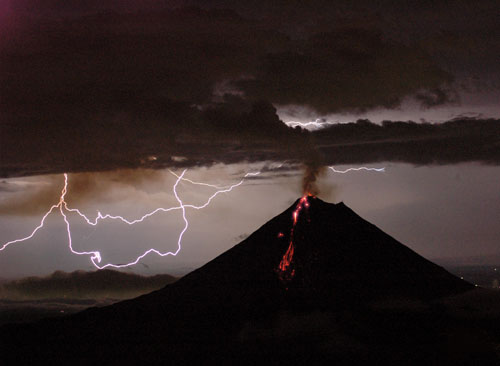 [Image: Arenal Volcano, Costa Rica].
[Image: Arenal Volcano, Costa Rica]."Imagine if plate tectonics stopped tomorrow," New Scientist suggests. A world without tectonics would be a world without earthquakes, the continents frozen in place, coastlines locked where they are. New mountains could never form, islands would stop emerging from the sea, and apartment insurance would be considerably cheaper.
While the end of tectonics is "not likely to happen any time soon," the article reminds us, "a controversial new theory says it could [come to an end] in about 350 million years." In fact, global tectonic activity may have ceased once before – "around 1.6 to 1.1 billion years ago, as a supercontinent called Rodinia formed." At that point, "all plate tectonics could have ceased for 100 million years." This caused the earth's surface to thicken, forming "a large band of granites" that now "stretches across the northern hemisphere."
But the internal roiling heat and liquid rock of the earth's core and mantle gradually intensified, growing strong enough to punch through the earth's rocky surface; this, kick-starting an era of volcanic eruption strong enough to break the continents apart, "would have got plate tectonics going again."
The belts of the earth were soon turning; new mountains began to rise; island chains drifted, crashing into one another; coasts trembled from below as their guts turned to gravel.
And it all may happen again: according to Paul Silver, of the Carnegie Institution's Department of Terrestrial Magnetism, the doors of the earth may slam shut in 350 million years, locking closed – perhaps initiating another one-hunded million years of terrestrial calm.
No comments:
Post a Comment